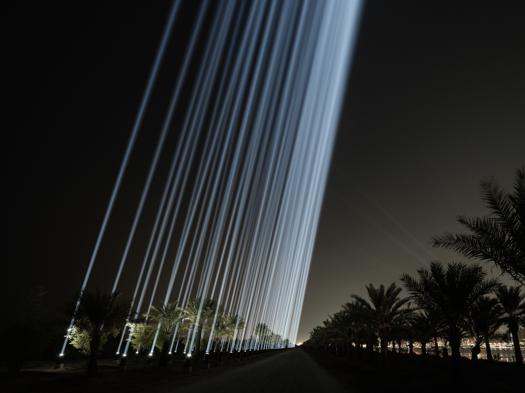LIGHT ART
If there is anything contemporary Art has taught us, it’s that Art does not need to be restricted to paint and marble. It comes in many formats, materials, and media. In one variation, the use of electrical light as the predominant medium in a work is known as Light Art.
Light Art is created through the handling of artificial light through a complex technological framework that allows the artist to bend and focus rays of illumination at their will. These works typically take the form of large-scale installations, allowing for challenging and impressive modes of expression.



Rafael Lozano-Hemmer: Translation Island, Collider, 2023
Abu Dhabi, United Arab Emirates
https://www.lozano-hemmer.com/exhibitions/rafael_lozano-hemmer_translation_island_abu_dhabi_2023.php
Light Art can exist in both natural and artificial contexts but is typically identified as using electrical energy to create the light itself (vs. natural light) and can exist in a variety of environments. As these works grow in size, so do their ambitiousness, complexity, and potential for unpredictability. Many artists are attempting to transform physical or geographical settings, playing with light and shadow to alter the facade of what they are projected upon.


Ersin Han Ersin
Plásmata: Bodies, Dreams, and Data, 2022
Athens, Greece
https://marshmallowlaserfeast.com/project/we-live-in-an-ocean-of-air/
Light Art has existed formally since the early 20th century, with artists using lighting for architectural effect. It also has significant cultural contexts, with cities such as New York, London, Berlin, Dubai, and Medellin creating public spectacles through intricately designed light shows. However, it is a more modern development for the light to be the sole medium of an artwork – allowing the world to be its canvas.
Visitors
